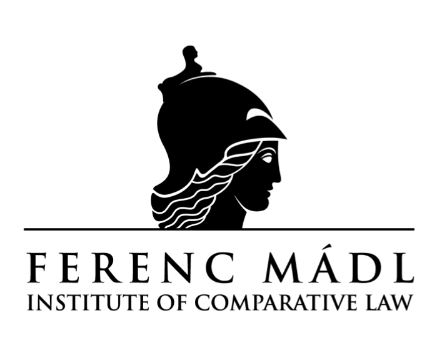Children’s right to remedy, as part of their protection
DOI:
https://doi.org/10.46941/2023.e1.8Kulcsszavak:
children’s rights, right to remedy, complaint mechanisms, UN CRC, UN Committee on the Rights of the Child.Absztrakt
A complaint mechanism is a procedure and tool by which children who believe that their rights have been violated seek a remedy and end to the violation. The right to remedy is a core human right, and the basic dimension of children’s access to justice and the recognition that children are full citizens are crucial to being protected. In most cases, independent children/human rights institutions (ICRIs) function as ombudsman offices, which are (mostly) complaint driven. If an institution has broad competence, it should determine within its structure either an identifiable commissioner or special unit/division responsible for children’s rights. A complaint can also be seen as an essential and direct source of information about children’s lives and problems, as well as a tool for ICRIs to propose amendments to policies and legislation. However, research has clearly shown that children and young people comprise a very small proportion of ICRI complaints. Why is that so? There is a lack of information and trust in public institutions. This may be due to the belief that complaints are not taken seriously, and perhaps due to fear of negative or retaliatory consequences. Therefore, complaint mechanisms are not sufficiently accessible to children and should be made more child-friendly. There is an important new international forum of complaints that can be analyzed here: the UN Committee on the Rights of the Child. Here, individuals or groups can make complaints regarding the violation of children’s rights since the Third Optional Protocol of the UN Convention on the Rights of the Child entered into force.
Hivatkozások
Bolton, D. A. (1990) ‘The Convention on the Rights of the Child: Prospects for International Enforcement’, Human Rights Quarterly, 12(1), pp. 120–129; https://doi.org/10.2307/762170.
Gran, B. (2011) ‘The Roles of Independent Children’s Rights Institutions in Implementing the CRC’ in Invernizzi, A. and Williams, J. (eds.) The Human Rights of Children. From Vision to Implementation. Ashgate, pp. 219‒239.
Herczog, M. (2009) Kézikönyv a Gyermekjogi egyezmény alkalmazásához. Budapest: UNICEF – CSAGYI.
Hodgkin, R., Newell, P. (2010) The Role and Mandate of Children’s Ombudspersons in Europe: Safeguarding and Promoting Children’s Rights and Ensuring Children’s Views Are Taken Seriously. ENOC Survey. Online. Available at: https://enoc.eu/wp-content/uploads/2015/02/201012-ENOC-Malta-survey-Role-of-Ombudspersons-for-Children.pdf (Accessed: 3 September 2023).
Hoffman, S., Stern, R. T. (2020) ‘Incorporation of the UN Convention on the Rights of the Child in National Law’, The International Journal of Children's Rights, 28(1), pp. 133‒156; https://doi.org/10.1163/15718182-02801001.
Imanian, S., Thomas, N. P. (2019) ‘Understanding the Impact of Independent Human Rights Institutions for Children: A European Study’, The International Journal of Children's Rights, 27(2), pp. 339‒372; https://doi.org/10.1163/15718182-02702001.
Kilkelly, U. (2010) ‘Protecting children's rights under the ECHR: The role of positive obligations’, Northern Ireland Legal Quarterly, 61(3). https://doi.org/10.53386/nilq.v61i3.453.
Lux, A. (2020) ‘‘Do My Complaints Matter?’ Child Participation and Child-friendliness of Complaint Mechanisms in European Independent Children’s Rights Institutions’, Societies Without Borders, 14(1); https://scholarlycommons.law.case.edu/swb/vol14/iss1/7.
Lux, A., Gran, B. (eds.) (2022) The Roles of Independent Children’s Rights Institutions in Advancing Human Rights of Children. Sociological Studies of Children and Youth, Vol. 28., Emerald Publishing Limited.
Majtényi, L. (1992) Ombudsmann. Állampolgári jogok biztosa. Közgazdasági és Jogi Könyvkiadó, Budapest.
Pinheiro, P. S. (2006) World Report on Violence against Children. United Nations, Secretary-General’s Study on Violence against Children Online. Available at:
https://violenceagainstchildren.un.org/sites/violenceagainstchildren.un.org/files/document_files/world_report_on_violence_against_children.pdf (Accessed: 3 September 2023).
Ramesh, A. (2001) ‘UN Convention on Rights of the Child: Inherent Weaknesses’, Economic and Political Weekly, 36(22), pp. 1948–1950; http://www.jstor.org/stable/4410687.
Reif, L. (2015) ‘The Future of Thematic Children’s Rights Institutions in a National Human Rights Institution World: The Paris Principles and the UN Committee on the Rights of the Child’, Houston Journal of International Law, 37(2), pp. 434–488.
ENOC Standards for Independent Children’s Rights Institutions. October 2001. Available at: http://enoc.eu/wp-content/uploads/2015/01/ENOC-Standards-as-approved-Paris-01.pdf (Accessed: 14 October 2023).
National Human Rights Institutions (NHRIs) Series: (2018) Tools to Support Child-friendly Practices. Child-friendly Complaint Mechanisms. UNICEF ECARO Online. Available at: https://www.unicef.org/eca/sites/unicef.org.eca/files/2019-02/NHRI_ComplaintMechanisms.pdf (Accessed: 10 October 2023).
UN CRC Committee. General Comment No. 2. (2002) The role of independent national human rights institutions in the promotion and protection of the rights of the child. CRC/GC/2002/2, 15 November 2002.
UN CRC Committee. General Comment No. 5 (2003) General Measures of Implementation of the Convention on the Rights of the Child. CRC/GC/2003/5, 03 October 2003.
UN CRC Committee (2020) Recent Developments In the Individual Communications Received Under The Optional Protocol to the Convention on the Rights of the Child on a Communication Procedure. (‘OPIC-CRC’) Online. Available at: https://opic.childrightsconnect.org/wp-content/uploads/2020/04/OPIC-CRC-trends.pdf (Accessed: 10 October 2023).
Optional Protocol to the Convention on the Rights of the Child on a Communications Procedure. Resolution Adopted by the General Assembly on 19 December 2011, A/RES/66/138.
UNICEF (2012) Championing Children’s Rights. A Global Study of Independent Human Rights Institutions for Children – Summary Report. UNICEF Office of Research Online. Available at: https://www.unicef-irc.org/publications/669-championing-childrens-rights-a-global-study-of-independent-human-rights-institutions.html (Accessed: 10 October 2023).
UNICEF (2018) National human rights institutions (NHRIs) Series: Tools to support child-friendly practices. Child-friendly Complaint Mechanisms Online. Available at: https://www.unicef.org/eca/sites/unicef.org.eca/files/2019-02/NHRI_ComplaintMechanisms.pdf (Accessed: 10 October 2023).
UN High Commissioner for Human Rights (2016) Access to Justice for Children. Report of the United Nations High Commissioner for Human Rights Online. Available at: https://digitallibrary.un.org/record/766759 (Accessed: 10 October 2023).





